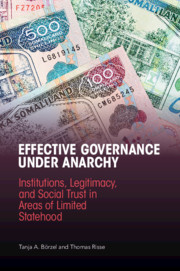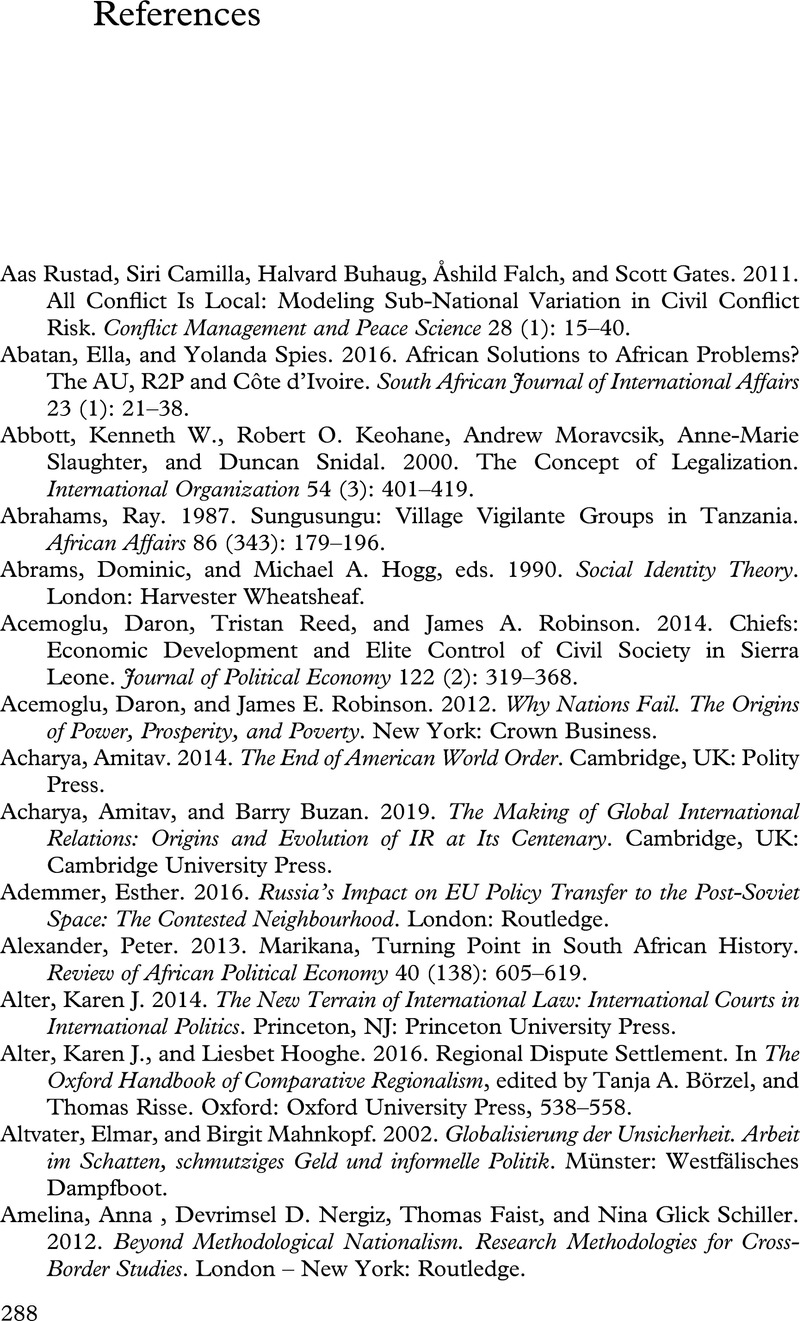 Effective Governance Under Anarchy
Effective Governance Under Anarchy Book contents
References
Published online by Cambridge University Press: 09 April 2021
Summary

- Type
- Chapter
- Information
- Effective Governance Under AnarchyInstitutions, Legitimacy, and Social Trust in Areas of Limited Statehood, pp. 288 - 353Publisher: Cambridge University PressPrint publication year: 2021


